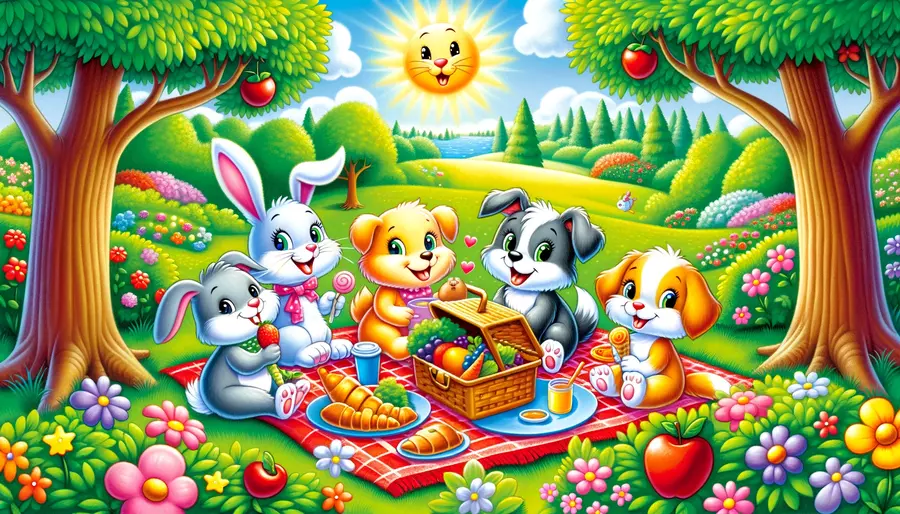Stories for 4 year olds: Free bedtime tales and fables for children
Delving into a world of fantasy and learning, bedtime stories for 4-6 year-olds are a window to boundless imagination and early development. These enchanting tales are not just for entertainment; they are catalysts for love, resilience, and the joy of reading, creating unforgettable parent-child moments.
Whether it's a classic fable or a new adventure, each story chosen for bedtime reading has the potential to inspire and teach, while also reinforcing the bonds between parent and child. The stories we share today can become the treasured memories of tomorrow.
Why are bedtime stories important for kids?
Bedtime stories are more than just a way to lull children to sleep. They are essential tools for emotional and cognitive development. Through the simple act of reading, children learn about empathy, problem-solving, and the complexity of emotions.

Moreover, stories at bedtime become a routine that children look forward to, fostering a sense of stability and security. They also enhance language skills, introducing new vocabulary and sentence structures in a fun and engaging way.
Lastly, the quiet and focused time spent reading allows for a stronger parent-child connection, making bedtime reading an invaluable part of the day.
How to choose the right story for your child
Selecting the right story for your child involves considering their interests, their level of understanding, and the themes you wish to introduce to them. Engaging stories for 4-year-olds are often those that involve animals, magic, and a good dose of humor.
Look for books with rich illustrations that complement the text and help to bring the story to life. Repetition and rhyme can also be incredibly appealing to young ears, making the story more memorable and the language patterns more understandable.
And don't forget to choose stories that align with the values you want to instill. Whether it's kindness, courage, or curiosity, bedtime stories are an excellent way to reinforce important life lessons.
Top bedtime stories for 4-year-olds
- "The Ugly Duckling" - A classic tale of transformation and self-acceptance.
- "The Gingerbread Man" - A story that combines adventure with the importance of caution.
- "Thumbelina" - A narrative that teaches about bravery and the power of friendship.
- "Huffy Puffy Wolf" - A modern twist on the classic three pigs that's both educational and entertaining.
- "The Enormous Turnip" - A fun story about teamwork and perseverance.
Creating magical moments with bedtime reading

Bedtime reading is a special time that can spark a lifelong love for books. To make these moments truly magical, create a cozy reading environment with pillows, blankets, and perhaps a soft light to read by.
Use different voices for characters to bring the story to life, and engage with your child by asking them about their favorite parts or what they think might happen next.
Remember, the goal isn’t just to finish the book but to enjoy the journey through the story together. This shared experience is what turns reading into something truly magical.
Stories that teach valuable life lessons
Many bedtime stories are designed to impart wisdom and valuable lessons to young minds. Educational bedtime tales often explore themes like honesty, kindness, and perseverance without being preachy.
Stories like "The Tortoise and the Hare" teach children about the value of persistence, while "Cinderella" showcases the rewards of kindness and patience.
By choosing stories with moral lessons, parents can help instill a strong foundation of values in their children, all while enjoying a captivating story.
Can bedtime stories improve a child's imagination?
Definitely. Bedtime stories are a powerful stimulus for a child's imagination. As children listen to imaginative stories for children, they visualize characters, settings, and actions, which enhances their creative thinking skills.
Moreover, stories encourage children to consider possibilities beyond their own experiences, sparking curiosity and open-mindedness. The more fantastical the story, the more it can inspire a child to dream and invent their own narratives.
Encouraging children to imagine alternative endings or create their own tales based on the characters they've met at bedtime can further boost their imaginative capabilities.
Questions related to bedtime stories for young kids
Can a 4 year old tell a story?
Yes, a 4 year old can indeed tell a story. At this age, children are beginning to develop their narrative skills and enjoy recounting simple stories or events. They often blend their imagination with real-life experiences, which is crucial for their understanding of the world.
Encouraging a child to tell their own stories can enhance their language abilities and help them learn to organize their thoughts. It's an effective way to boost their confidence and creativity.
What is the most famous story for kids?
"Cinderella" remains one of the most famous stories for children worldwide. It's a classic fairy tale that has transcended cultures and generations, with its message of hope and the power of kindness.
The story's universal themes and the captivating idea that goodness prevails make "Cinderella" a timeless tale. It encourages children to believe that no matter the obstacle, dreams can come true.
What is a story for a 3-4 year old?
A story suitable for a 3-4 year old is generally short and simple, with themes that are easily relatable to their everyday experiences. These stories typically involve repetition and rhyme, aiding their language development and keeping them engaged.
Stories for this age group should also be accompanied by vibrant illustrations and feature characters that resonate with young readers, fostering a stimulating and interactive reading experience.
Print this tale for free
You're welcome to print this bedtime story for free. Simply click the print icon on your browser or copy the text into a word processing program and hit print. Enjoy sharing this timeless tale with your loved ones!
Choose the format to start the process.

Leave a Reply